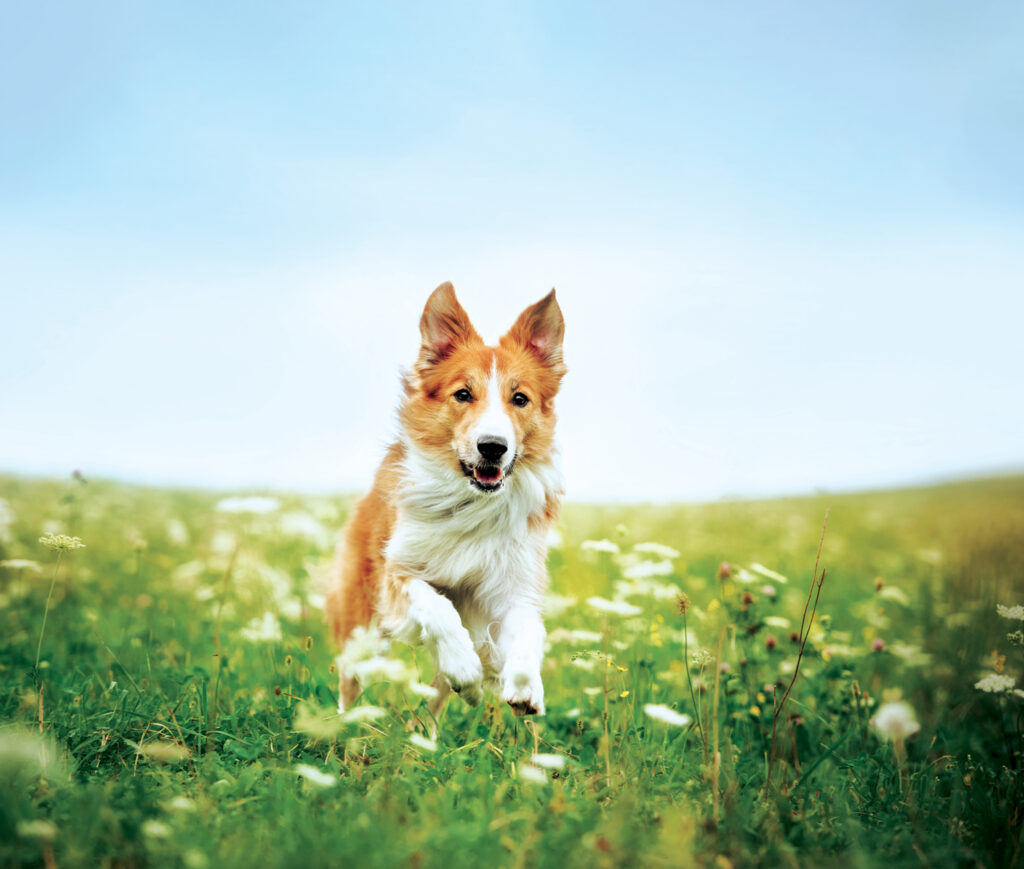
All manner of pet product sales are increasing as animals become more significant parts of many people’s lives. Nearly every category within the pet industry is showing sales increases—including foods/treats, toys, health and wellness products, apparel and grooming—activity that manufacturers, suppliers and retailers in the industry expect to continue for the foreseeable future.
According to the 2024 State of the Industry Report by American Pet Products Association, U.S. dog and cat owners spent $147 billion in 2023—activity that is projected to hit $150.6 billion in 2024. (The report covered dogs, cats, fish, birds, reptiles, small animals and horses.)
For medical textiles product manufacturers, this market presents a huge opportunity to not only help animals in need but also to become part of a multibillion-dollar industry that shows no signs of slowing down. In the following, we explore some of the advanced medical textile solutions currently available and how demand for these types of items is increasing.
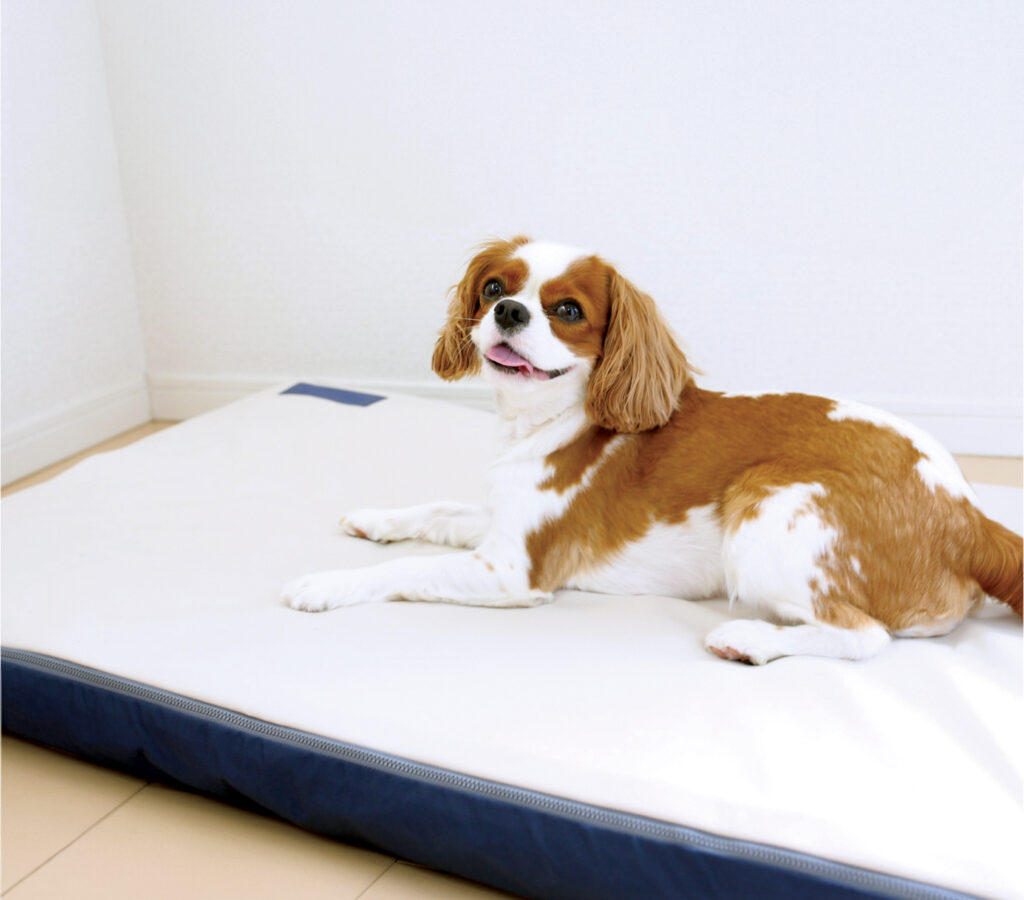
Assisting bedridden dogs
Headquartered in Mizuho City, Japan, HIVIX Co. Ltd. manufactures inflatable products for medical, nursing and industrial applications. With an anti-bedsore air mattress for dogs, the company is making its first foray into the pet products industry, says Junko Takai, president.
Developed in “collaboration with a veterinary department of a university hospital,” the mattress is intended to prevent bedsores in bedridden dogs. It’s constructed using the same materials as in pressure mattresses for humans, making it durable and more sustainable, says Takai, explaining it incorporates a silicone/urethane-coated polyester, nylon and other textiles. Available for all breeds, it comes in small, medium and large sizes.
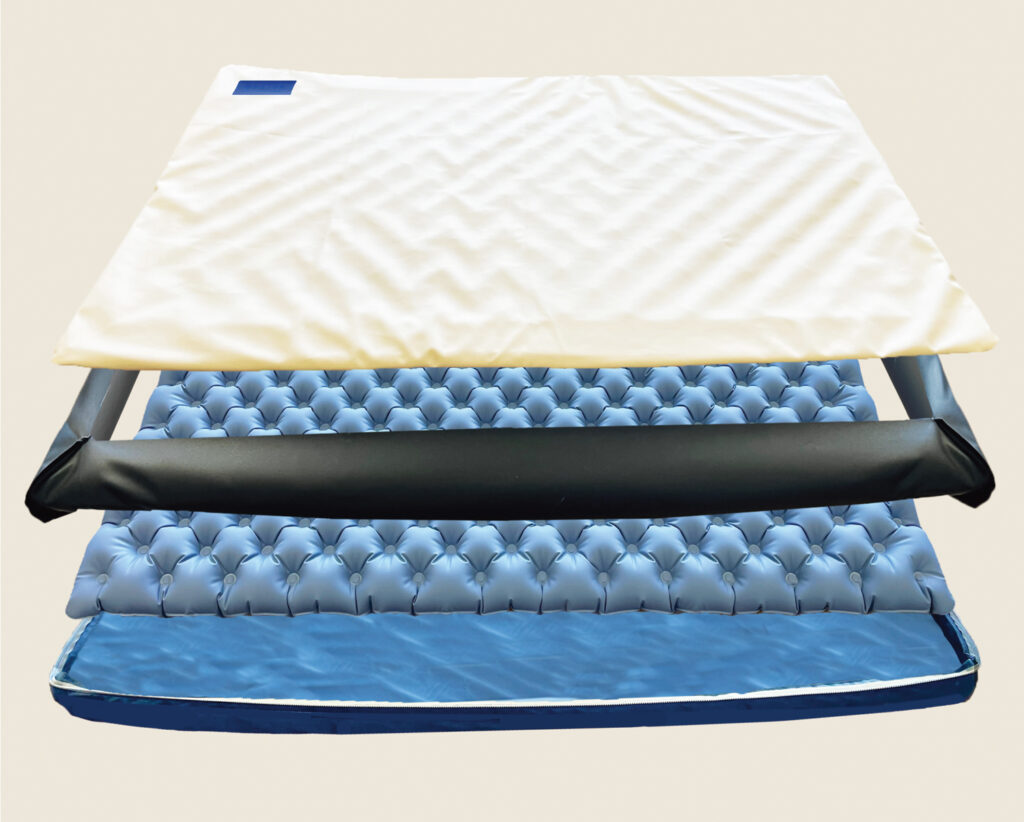
“The number of products and foods for older dogs has increased dramatically in recent years,” Takai says, remarking on one trend she’s noticed. “Most likely, being eco-friendly and recyclable will be important when it comes to disposable products. Recently, an increasing number of products have been developed by veterinarians themselves, and we believe it’s important to collaborate with experts in this field.”
HIVIX would like to develop more products targeting aging pets. “In recent years, the life expectancy of pets has been on the rise,” she says. “In dogs, it has increased by about 7% over the past five years. In Japan, older dogs now account for 50% of the total number of dogs. Therefore, demand for products for elderly dogs is also on the rise, especially for nonwoven fabrics used in diapers and polyester used in nursing care products.”
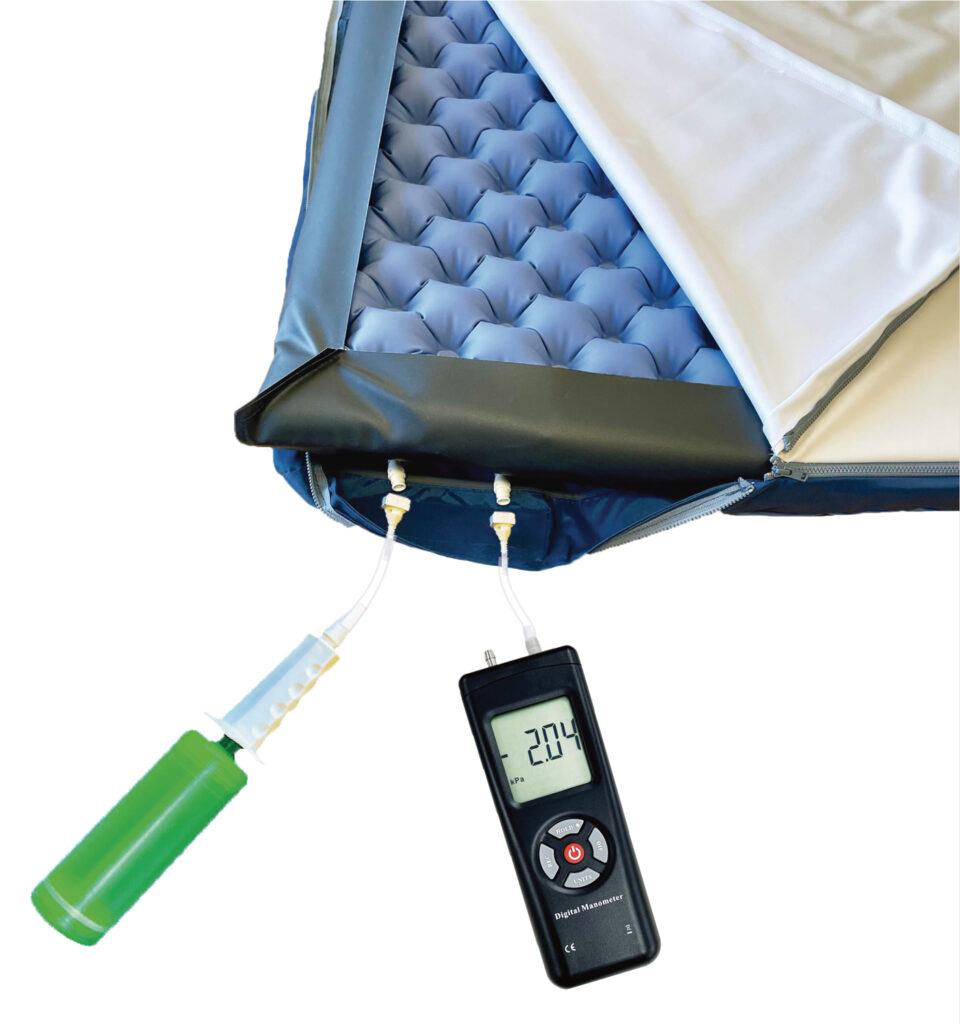
Keeping animals moving
Specializing in creating veterinary custom orthotics, prosthetics, mobility assistive devices for short-term injury management and preformed splints, OrthoPets®, headquartered in Westminster, Colo., collaborates with veterinarians, prescribing custom mobility solutions, says Ashley Kitzis, a registered veterinary technician and director of business operations for Dassiet Vet Inc./OrthoPets. Dassiet, headquartered in Finland, is the parent company. OrthoPets also works with pet owners, providing splints and other devices. It primarily serves canines but also help felines, avians, farm animals and “the occasional zoo animal,” says Kitzis.
Among its products directed toward dogs are the Carpus and Tarsus wraps. Incorporating neoprene-B foam and Velcro® plush straps, they’re intended to address “mild instabilities” of those joints for short-term use. They also help dogs that may have nerve issues in their limbs feel where their feet are placed on the ground as they walk.
Another product targeting dogs, cats, equines and farm animals is the proprietary Unitex wrap. “These are supportive wraps for the lower limb,” Kitzis explains. “[The wrap] can be used in bandaging as it is self-cohesive, much like a traditional vet wrap but with less risk for limb tourniquet effect, while being moisture-wicking and breathable.”
At times, sourcing has proved challenging, says Kitzis, adding that several materials the company used in the past have become unavailable. In some cases, alternatives were available; for others, the company is still looking for replacements.
OrthoPets is also seeking to become more sustainable and eco-friendly, but there are constraints here as well.
“Balancing the quality and performance of materials with eco-friendly properties with our product lines is still a challenge,” Kitzis says. “While some of our non-textile products are eco-friendly, we would still like to see more of our portfolio follow the trend as new and comparable materials become available, hopefully in the future.”
Kitzis says animal medical textiles are demonstrating “significant growth,” driven by increases in pet ownership and advancements in veterinary care as well as an aging pet population and pet owners more dialed into pet wellness. She expects that as pet ownership keeps rising, particularly among millennials and their younger counterparts, demand will continue trending upward.
Product and materials innovations along with manufacturing and sustainability advancements will also contribute, resulting in more “effective and comfortable medical textiles” and attracting more buyers, Kitzis adds.
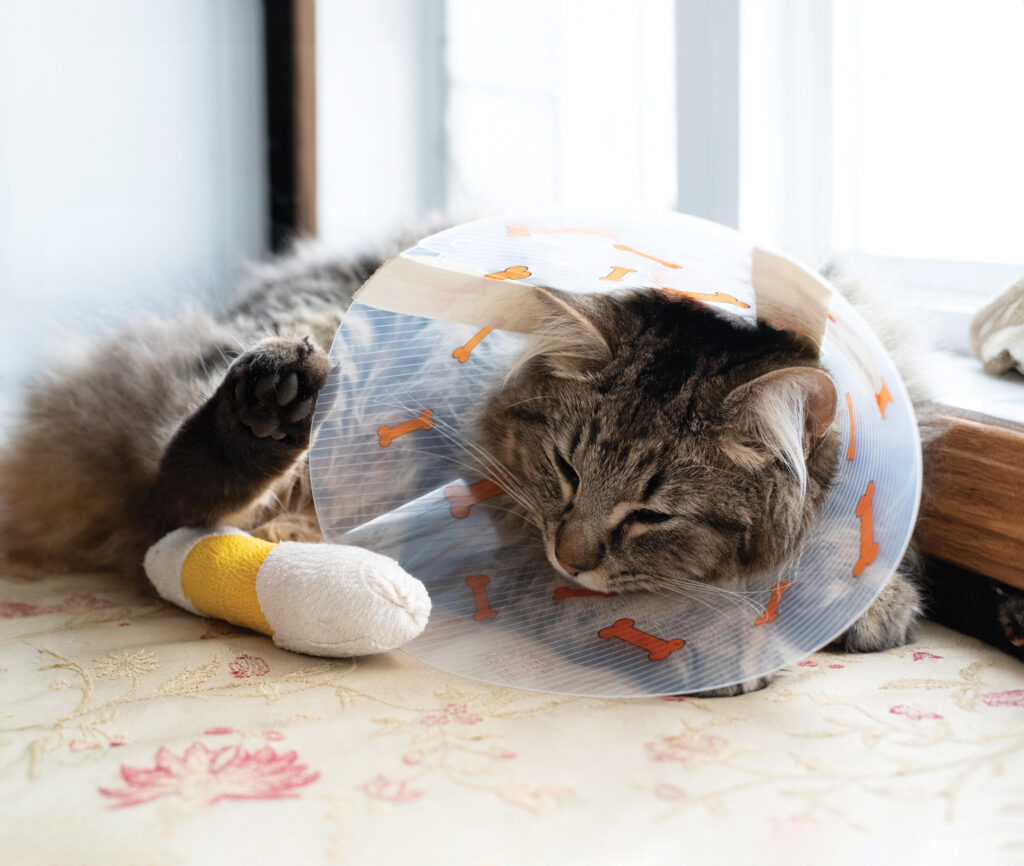
Wound care and more
A subsidiary of Milliken & Company, OVIK Health was recently rebranded from Milliken Healthcare Products LLC—a move undertaken to “build momentum for its portfolio of leading solutions,” says Katelyn Hussey, animal health sales representative.
Headquartered in Salisbury, Mass., OVIK manufactures advanced wound care products, wraps, burn dressings, tapes, compression solutions and cohesive bandages for the health care, sports medicine and animal care sectors. For the latter, the company offers cohesive bandages and wraps for small and large animals.
PowerFlex® is a cohesive bandage intended for equines and other large animals. Extremely durable, it features high abrasion resistance that prevents it from shredding while at the same time eliminating the need for scissors because of its “straight hand-tearability.” Another is PetFlex®, a self-adhering, elastic bandage for “companion animals” that has multiple uses, such as affixing, splinting, light compression and wound care. It also has EasyTear technology. Both products contain a proprietary blend of linear yarns and fabrics.
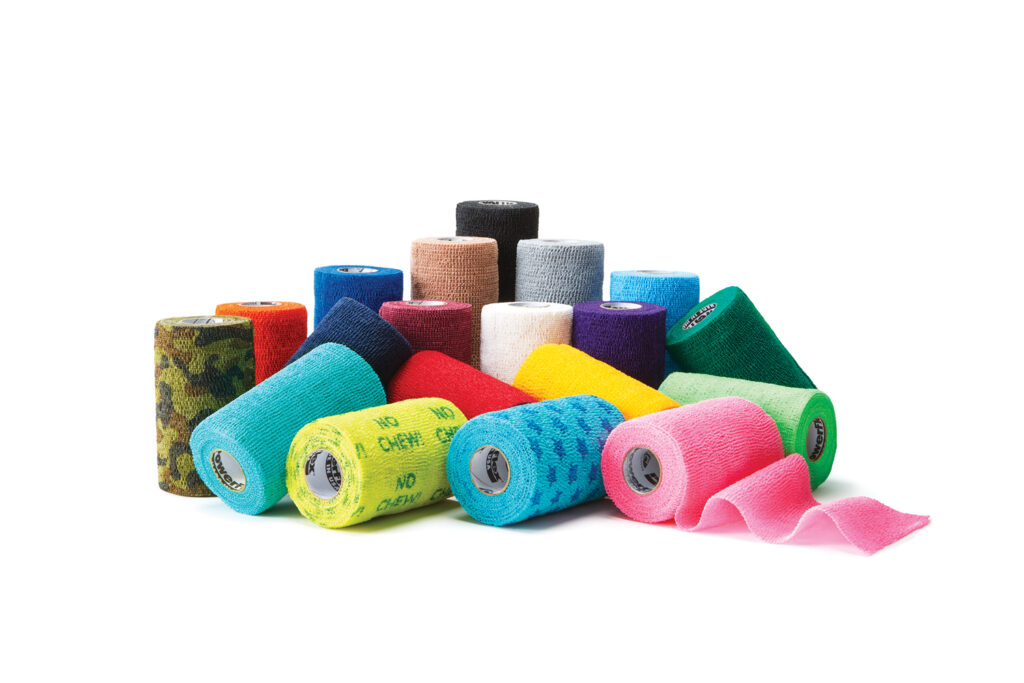
Hussey says although pet owners and others in the animal health care market value the designation of “Made in the USA,” product affordability still plays a significant role in purchasing decisions. As such, offshore products pose a particular concern. “[They] have been our biggest challenge in recent years,” Hussey says. “These products are lower quality and lack the advanced features our products offer, but their cheaper price can be tempting. That’s why we’re putting a lot of effort into educating our customers about the unique features that set our products apart, as we believe this knowledge is key to navigating challenges like this.”
OVIK is also paying attention to environmentally friendly trends such as sustainable packaging and recyclability and is discussing adding a wound dressing to its bandages line, allowing the company to launch an all-in-one product offering to the market.
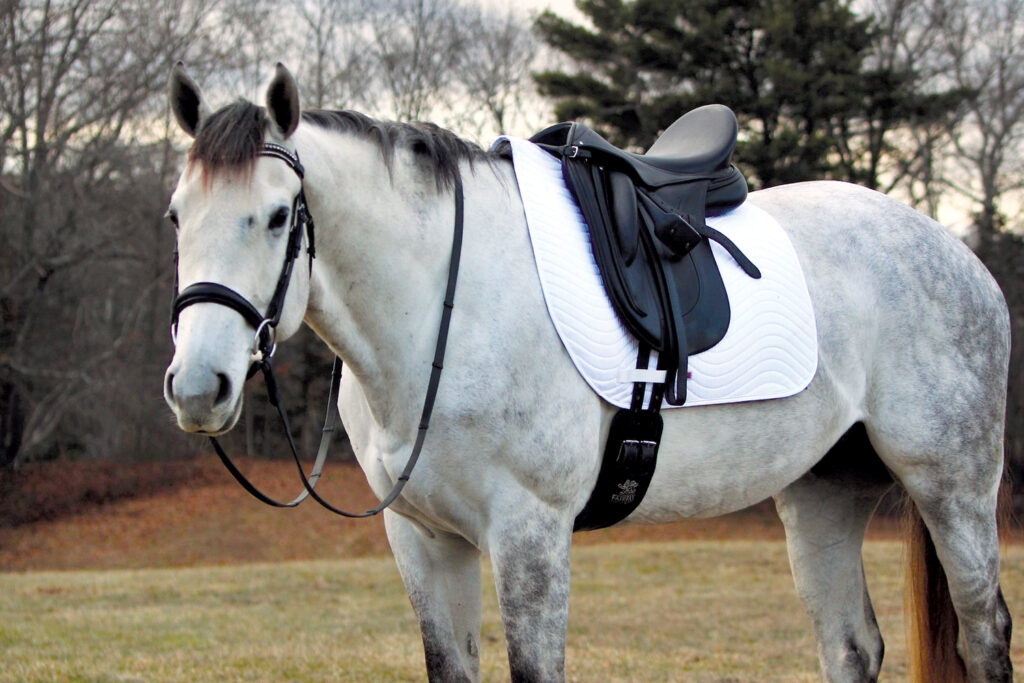
Enhancing wellness and recovery
Combining CELLIANT® technology from Hologenix LLC (see sidebar) with its wellness products, Draper Therapies provides items for canines, felines, horses and humans. Among those for animals are blankets for pet beds, furniture and crates; pet mats; and specialty equine products such as leg wraps, saddle pads and blankets, says Becky Shipps, product manager for the Canton, Mass., company. These incorporate a variety of “fabric formations” including nonwoven pile and knits.
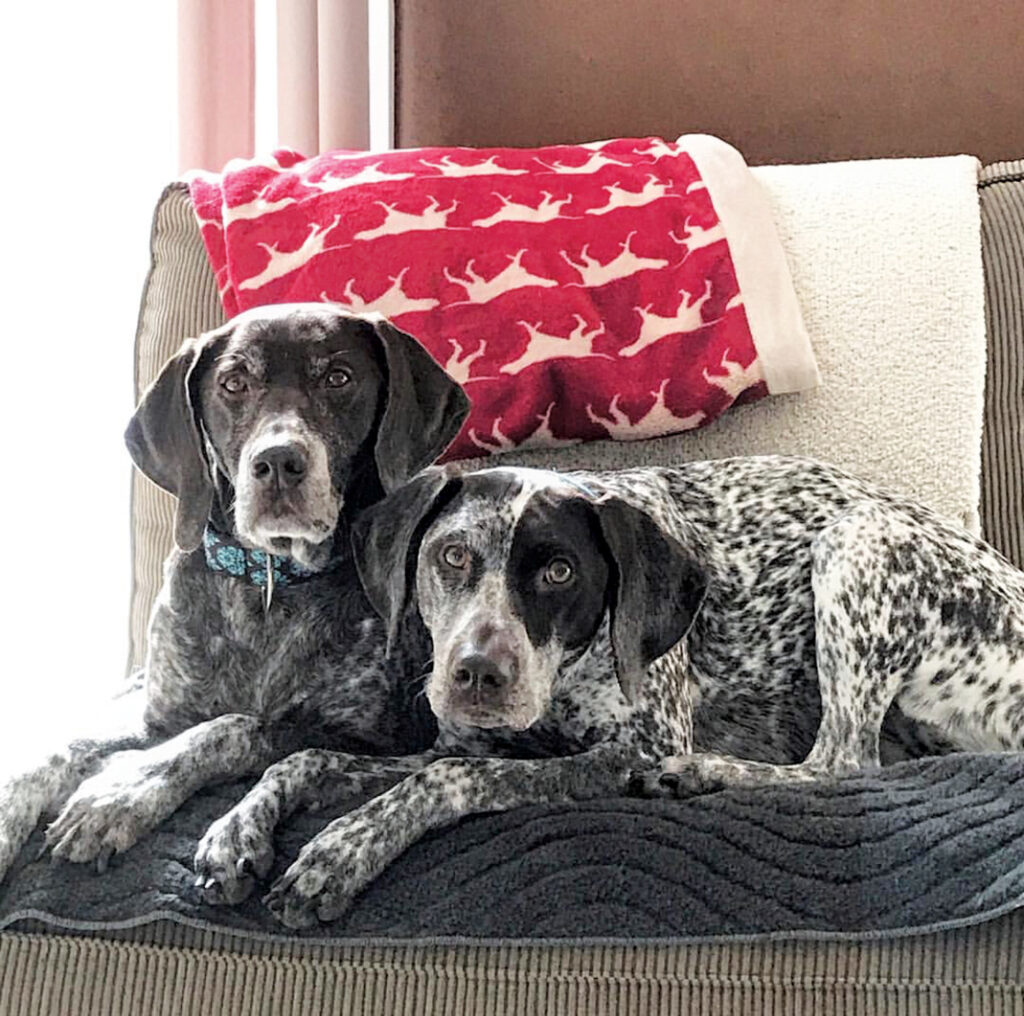
CELLIANT minerals spark an increase in blood circulation at the point of contact/application site in healthy humans. This action can deliver a myriad of benefits, such as enhanced speed and endurance, increased stamina and energy, better sleep and greater comfort, says Shipps, and has also been shown to hasten recovery, increase thermal energy and support heat generation. Now this technology is being incorporated into certain products for animals, such as those from Draper Therapies, to deliver those same benefits.
Shipps says when it comes to high-quality and affordable pet products, demand will always be strong. This is especially true when it comes to the equine market, she adds. “These products are notoriously expensive, and preserving the health of expensive competition animals is a priority,” Shipps explains. “I [also] don’t see the demand for eco-friendly and sustainable small-animal products going away anytime soon. Those trends do not seem to be as prevalent in the equine market; quality, effectiveness and durability are the top priorities for equine customers.”

She’s excited about the changes taking place in the pet health/wellness arena. “When I first started with [Draper] Therapies, therapeutic textiles were still a very new concept and consumers were skeptical of their efficacy,” Shipps recalls. “[But] now, the average consumer is much more open to not only the concept that a textile product can increase their pet’s wellness, but they are invested enough in their pet’s health to seek out a product that has that capability, even if it costs a little more. It’s great to see we have the technology to make pets’ lives better and that people want to use it.”
Pamela Mills-Senn is a freelance writer based in Seal Beach, Calif.
SIDEBAR: Painful injury, promising solution
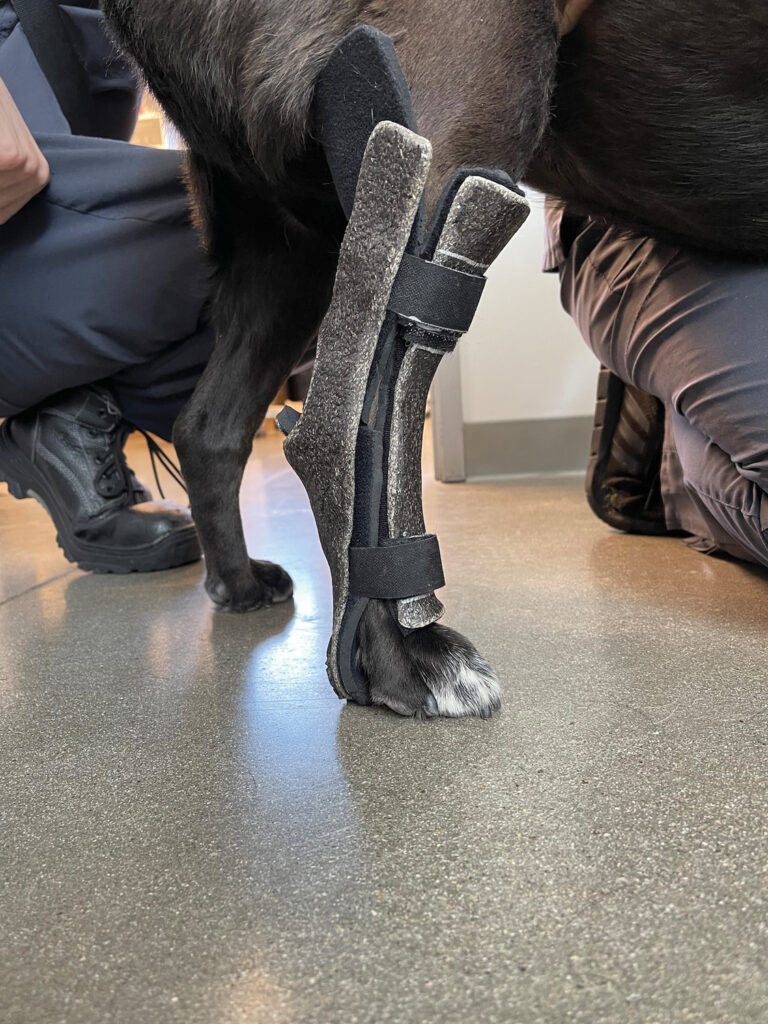
Any person who has experienced an ACL tear knows the suffering that can ensue; it’s the same situation for dogs with a cranial cruciate ligament (CCL), or knee ligament, injury. As Ashley Kitzis, a registered veterinary technician, explains, this is a common occurrence in canines, and like a human ACL injury, it causes them instability and pain.
Kitzis is director of business operations for Dassiet Vet Inc./OrthoPets®. Headquartered in Westminster, Colo., OrthoPets (parent company Dassiet is in Finland) provides mobility devices, custom orthotics, preformed splints and other solutions to veterinarians and pet owners. In 2023, Dassiet and OrthoPets launched a study to determine the effectiveness of their Paladin tarsal brace device. Designed to address canine CCL insufficiency, the brace consists of a neoprene pad and Velcro® straps.
“Using the brace keeps the dog’s ankle straight, which reduces the strength of certain calf muscles,” Kitzis explains. “To balance this, dogs use their hamstring muscles while walking. After about three or four months, this adjustment helps stabilize the knee and the dog can stop using the brace.
“Our veterinary clinic customers around the world have enrolled their patients in the study and are monitoring their patients in the brace,” she continues. “OrthoPets and our Finland office are collecting the data to write up the study.”
The study’s purpose was to see if “muscle reprograming” would provide an effective alternative to surgery or lifelong bracing. They’ve now stopped enrolling participants (but still sell the brace) and anticipate writing up the data from the yearlong study sometime this winter. Kitzis describes the results so far as “positive.”
SIDEBAR: Converting, reemitting energy
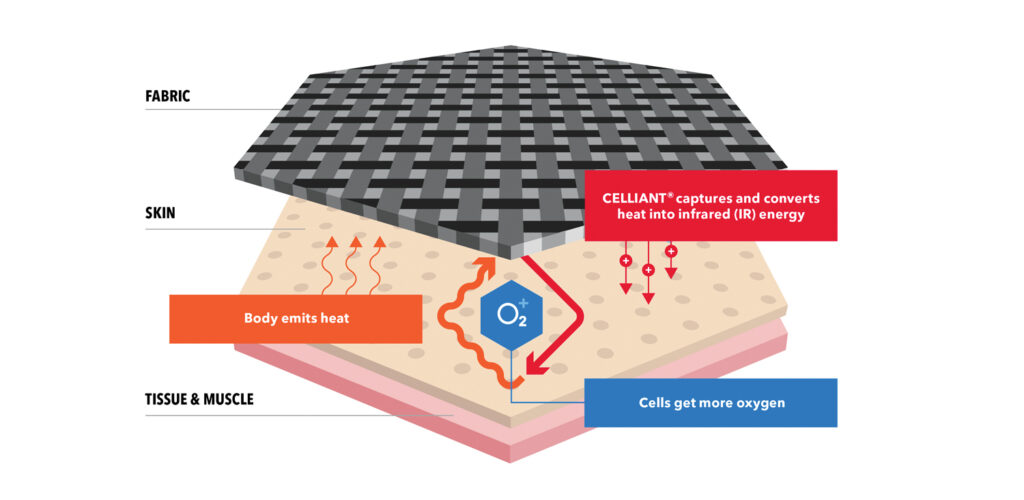
Seth Casden, CEO and cofounder of Hologenix LLC in Pacific Palisades, Calif., describes the company’s CELLIANT® product as a “proprietary mineral matrix that is embedded into textiles.” The minerals work with the ambient heat given by
the body, capturing and converting it to infrared energy then reemitting it to the body as infrared light.
This process offers a “whole host of benefits,” says Casden, such as increasing local blood circulation, helping with thermoregulation and supporting oxygenation, which may speed recovery, improve sleep and regulate body temperature, among other positives.
The minerals can be embedded into materials such as staple fiber, spun yarn, filament yarn, insulation, fabric, printed coatings and nonwovens. When permanently embedded, its performance lasts as long as the fabric/textile and won’t wash or wear out.

“Currently, our fiber and yarn solutions consist of nylon, polyester, recycled nylon, recycled polyester [and] viscose, which can be blended with other fiber types,” says Casden. However, he notes it’s also possible to print the minerals onto any type of fabric (CELLIANT Print). In this case, performance lifespan is more limited, about 50 or 60 washes. However, it does allow for a higher mineral load.
CELLIANT minerals have long been incorporated into wellness products for people. Now, textiles containing the minerals are showing up in items designed for pet products. In addition to those from Draper Therapies, these include horse wraps from Sox for Horses, Avanti pet beds and a line of dog beds from Woofmat.
 TEXTILES.ORG
TEXTILES.ORG


